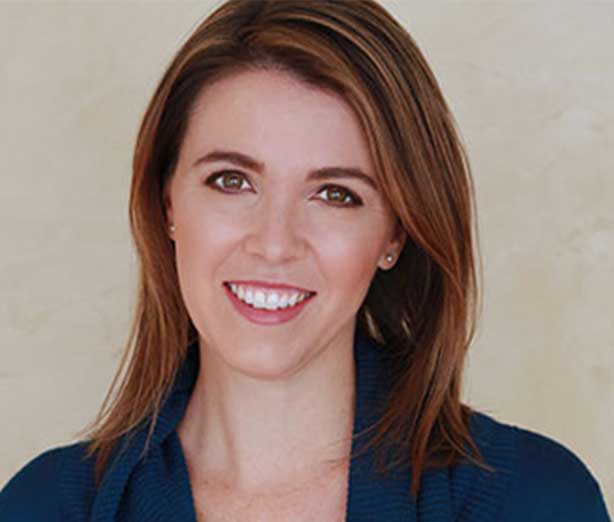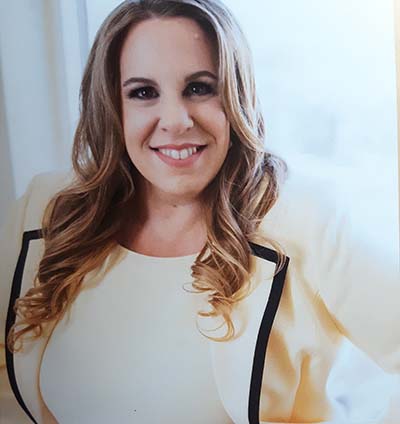CD283: A Federal Reserve Digital Dollar (CBDC)
- CD283: A Federal Reserve Digital Dollar (CBDC) Jennifer Briney 1:13:56
The House Financial Services Committee has been investigating the possibility of the Federal Reserve creating a Central Bank Digital Currency. In this episode, hear experts unpack the nuances and implications of this idea during three hearings, and discover how you can play a part in shaping the future of American currency. Please Support Congressional Dish – Quick Links Contribute monthly or a lump sum via Support Congressional Dish via (donations per episode) Send Zelle payments to: Donation@congressionaldish.com Send Venmo payments to: @Jennifer-Briney Send Cash App payments to: $CongressionalDish or Donation@congressionaldish.com Use your bank’s online bill pay function to mail contributions to: Please make checks payable to Congressional Dish Thank you for supporting truly independent media! Background Sources Recommended Congressional Dish Episodes Operation Choke Point Frank Keating. November 7, 2018. The Hill. House Committee on Oversight and Government Reform Staff. May 29, 2014. U.S. House of Representatives. Digital Asset Glass-Steagall James Rickards. August 27, 2012. U.S. News & World Report. Audio Sources September 14, 2023 Committee on Financial Services, Subcommittee on Digital Assets, Financial Technology and Inclusion Witnesses: Yuval Rooz, Co-Founder and Chief Executive Officer, Digital Asset Paige Paridon, Senior Vice President and Senior Associate General Counsel, Bank Policy Institute Christina Parajon Skinner, Assistant Professor, The Wharton School of the University of Pennsylvania Dr. Norbert Michel, Vice President and Director, Center for Monetary and Financial Alternatives, Cato Institute Raúl Carrillo, Academic Fellow, Lecturer in Law, Columbia Law School Clips 27:35 Rep. French Hill (R-AK): Look, the Constitution is clear. Only Congress has the authority to coin Money and regulate the value of such money. And we’ve heard the same from Fed officials, right before this committee, and most recently from Vice Chair for Supervision, Michael Barr, who last week told an audience in Philadelphia and I quote, “The Federal Reserve would only proceed with the issuance of a CBDC with clear support from the executive branch and authorizing legislation from Congress.” The Biden Department of Justice agrees, saying, quote, “there would be substantial legal risks to issuing a CBDC without such legislation.” 32:05 Rep. Stephen Lynch (D-MA): CBDC is just one type of publicly issued digital dollar and would be issued, backed, and regulated by the Federal Reserve and have the full faith and backing of the US government. This could serve as an alternative to existing forms of payments and have a benefit, including instant payment settlement, provide a medium for cross border transactions, and foster greater financial inclusion. More than 130 countries have begun to explore their own government backed digital currencies. China, Russia, Saudi Arabia and India have already commenced pilot programs, and a digital Euro pilot could be launched as early as 2028. Meanwhile, the US remains far behind amid increasing and blatant information about features of digital currency. While concerns about data privacy and government surveillance are real, especially in countries that do not respect human rights and privacy, a CBDC does not have to be designed that way. We could employ an architecture that would protect personal data while including anti-money laundering and terrorist financing features. 33:15 Rep. Stephen Lynch (D-MA): It is counterintuitive that my colleagues should be raising concerns about data privacy while thousands of private companies, domestic and foreign, are surveilling, aggregating, and selling consumer data each and every day. 33:45 Rep. Stephen Lynch (D-MA): I’m announcing and inviting my colleagues to join the Congressional Digital Dollar Caucus. This forum will educate members on critical issues relating to the development, design, and potential implementation of a government issued digital dollar. I plan to invite innovators, technologists, academics, and other experts to share their findings and development. I hope my colleagues will join me in this exploration. 34:15 Rep. Stephen Lynch (D-MA): The use of anonymous cash has plummeted and more of our transactions are occurring online and under surveillance, tracked and aggregated by financial services companies. Indeed China has turned that fact into a tool of full spectrum surveillance of its citizens. This is why I’ve introduced the Ecash Act. This bill directs the Treasury to design and pilot a digital version of cash and would complement the Fed-issued CBDC. It would allow individuals to make instant peer to peer payments with no consumer data or transaction tracking and without the use of a bank account. 36:10 Rep. Tom Emmer (R-MN): The need to protect Americans’ right to financial product privacy is at an all time high. That’s why I introduced the CBDC Anti-Surveillance State Act with over 50 of my colleagues. This bill prevents unelected bureaucrats from creating a tool for financial surveillance if not open, permissionless, and private, like cash, a CBDC is nothing more than a CCP-style surveillance tool that will oppress the American way of life and we’re not going to allow that to happen. 38:20 Dr. Norbert Michel: In my testimony, I argue that the United States should not launch a Central Bank Digital Currency, a CBDC. Advocates for a CBDC tout many potential benefits, but there’s nothing unique about the technology that would provide those supposed benefits. 39:00 Dr. Norbert Michel: A CBDC in any form would be a direct liability of the central government, a digital tether to its citizens such that it would radically alter the existing public-private relationship that already exists in our monetary arrangement. 39:25 Dr. Norbert Michel: First, issuing a CBDC would not help preserve the status of the United States dollar, it would likely damage it. Proponents argue that because China has launched a CBDC, the United States must keep up by launching its own. Others make the narrower claim that the US must launch a CBDC to keep up with broader technological changes in the payment sector. But anyone who chooses to do so can transact digitally in U.S. dollars right now. The CBDC does not take us from a world with zero or a few digital transactions to one filled with digital transactions. Moreover, the dollar’s renowned status is owed to the strength of the American Economy and its legal protections for private citizens relative to many other countries. Unlike in many other places, Americans do not have to live in constant fear that the government will take their money. However, if the US creates a CBDC, anyone who wants to use the dollar would lose a layer of protection from that type of government abuse. 40:30 Dr. Norbert Michel: The second myth is that a CBDC would expand financial inclusion by providing a new source of financial services for America’s unbanked and underbanked populations. Again, though, this is not a technological problem. In other words, the CBDC itself does not accomplish this goal. The private sector already enables us to transact digitally, and it has been steadily shrinking the number of Americans without financial services for years. We also know, because the FDIC asked them, that unbanked and underbanked Americans primarily are in that situation because either they don’t have enough money to have an account, or they don’t want to give their personal information to a bank or the government. And what should be obvious is that a lack of sufficient income is a much broader economic problem than a CBDC or financial service technology. While some proponents argue that a CBDC lowers the cost of providing financial services, that’s true only if the government subsidizes those costs or chooses to waive the same level of regulatory scrutiny it requires of private firms. And that level of scrutiny, it turns out is more than just a costly mandate that the government has placed on private firms. It’s also the one that causes those unbanked Americans to say they don’t trust banks. It’s also the same one that requires people to hand over their personal information to private companies, and as a result potentially to the government. If the government removes that mandate for all financial service providers, there would be no cost advantage to a CBDC. 42:05 Dr. Norbert Michel: That brings me to my last myth, the idea that a CBDC could somehow enhance financial privacy. Currently, Americans are forced to hand over personal information to financial institutions. Those institutions are required to track transactions, and the government can access that information without a warrant. The fourth amendment is supposed to protect Americans from the government gaining access to this kind of information, unless they show probable cause and obtain a warrant. But it no longer protects Americans when it comes to financial information. And the only buffer left is that the government must go through the financial institution to obtain that information. Introducing a CBDC would remove this last layer of protection. It would place all financial transactions either in a government database or leave them a keystroke away. 44:15 Paige Paridon: We believe that at this point there is little evidence that a CBDC would bring measurable benefits to the US economy or consumers. Furthermore, a CBDC could upend the commercial banking system and create financial instability. 44:30 Paige Paridon: CBDC can take one of two general forms: a wholesale CBDC, which would be used only by financial intermediaries, and a Retail CBDC, which could be used by consumers and businesses. To date, most research and attention has been focused on a retail, intermediated, account-based model in which consumer’s CBDCs would be held in an account at a bank or another financial intermediary, like an asset held in custody. The CBDC could not be used by the bank to make loans in the way that dollar deposits are used today. Any transfer of $1 deposit from a bank to a CBDC is $1 unavailable for lending to businesses or consumers. By attracting deposits away from banks, a CBDC likely would undermine the commercial banking system in the United States and severely constrict the availability and increase the cost of credit to the economy. 46:30 Paige Paridon: With respect to financial inclusion, a review of the reasons why certain individuals are unbanked makes it clear that a CBDC would be unlikely to meaningfully increase financial inclusion. For example, FDIC data reveals that many respondents are unbanked because of privacy concerns, and intermediated CBDC is unlikely to mitigate those concerns, given that it would presumably come with the same know-your-customer requirements that currently apply to banks. 54:35 Christina Parajon Skinner: So privacy rights are the clearest place to start. Today, individuals can enjoy comprehensive privacy in their payments transactions by using cash. Now, although most central banks have suggested that CBDC is not going to replace cash, that near-term promise can’t be guaranteed over the longer term, and the insinuation that CBDC is necessary or inevitable seems motivated by a view that cash will eventually become obsolete. But because central banks don’t have the technology presently to offer cash-like privacy, a digital currency — unless it’s radically redesigned — will bring with it the ability for the state to monitor or surveil its citizens’ payments activity. 55:20 Christina Parajon Skinner: I’d like to focus on the impact of a CBDC on the Federal Reserve. Certainly since 2010, the power and authority of the Fed has grown considerably, and Congress’s responsibility to oversee the Fed requires it to understand how a CBDC could further empower the central bank but also how it might weaken it. On the one hand, CBDC could result in a larger central bank balance sheet. Issuing CBDC would increase the liability side of the Fed’s balance sheet if the total of bank reserves, repos, and cash balances largely remained unchanged. So if the liabilities with CBDC increase, so too much the Fed’s assets. The Fed could buy more Treasury securities to match CBDC, but that could possibly invite pressure on the Fed to issue more CBDCs to in turn absorb more government debt. And overall, that dynamic could further erode the limited fiscal discipline that we have remaining. A CBDC could also affect the Fed’s independence in the way that it would establish a direct relationship between the central bank and the real economy for the first time in history. One result of that relationship would almost certainly be the further erosion of the line between monetary and fiscal policy. When central banks begin to issue liabilities directly to the people, it will become much more difficult for the central bank to justify their provision of liquidity to banks and the financial system, as opposed to households, especially during a crisis. And effectively this could open the door to political pressure on the Fed to provide liquidity assistance to households during turbulent economic times. But these sorts of household level interventions would radically transform the central bank and its purpose and role within society. 57:40 Christina Parajon Skinner: So it does not inherently improve financial inclusion unless it’s paired with accounts for all citizens, which the central bank itself has already recognized as infeasible. 59:15 Raúl Carrillo: Today, I support the call for a digital dollar system, including CBDC, Fed accounts, and Ecash. 1:02:15 Raúl Carrillo: Indeed, the only way to evolve beyond the surveillance status quo is to establish a direct digital dollar interface with consumers where the Fourth Amendment and other protections may actually apply. If we truly care about privacy, we should treat the banking and blockchain industries’ appeals to partnership as suspect, based on legal and technological grounds alone. We can build a retail CBDC and Fed account system with superior protections compared to what exists now and superior protections to the systems that are being built around the world currently. 1:02:50 Raúl Carrillo: So today I also advocate for the inclusion of digital cash, as detailed in the Electronic Cash and Hardware Security and Secured Hardware Act, the Ecash Act, re-introduced by Representative Lynch. Today, Ecash devices available on a smart card or a phone card would serve as digital counterparts to cold hard American cash. These devices would not make payments over the internet. Instead, they would store Treasury issued digital dollars on card hardware to enable everyday small dollar transactions for everyday people. These transactions would be subject to the BSA/AML regime, and as a boon to law enforcement, we can set privacy-sensitive security controls and caps on transactions and usage. However, the cards would in no instance be capable of generating data that companies and agencies can abuse. We preserve a place for privacy within public infrastructure. The Ecash Act harkens back to the past to the days when President Lincoln established the banking and cash system that we still use today. And it also harkens to an exciting, inclusive, safe digital future. 1:08:05 Paige Paridon: CBDC, because it would be a direct liability of the central bank, it would be perceived as the ultimate safe asset. So from that perspective, particularly during times of economic Stress, it could attract depositors to pull their money out of the banking system to flee or run to a CBDC if there was perceived concern about the banking system or the financial system overall. So every dollar that currently resides in a bank account can be deployed for useful purposes in the economy, primarily through lending. Every dollar that is pulled out from the banking system and put into a CBDC is one less dollar that could be put to good economic use. And that is why we have a fundamental concern with a retail CBDC, given the flight-to-quality risks. 1:09:35 Rep. Maxine Waters (D-CA): 130 countries, representing 98% of the global economy, are now exploring digital versions of their currencies, including the United States. Almost half of these countries are in advanced development pilot or launch stages of their CBDCs. Can you discuss how CBDCs may shape the future global financial landscape? What would it mean for the United States if we instead chose to stay on the sidelines of this race? Raúl Carrillo: Thank you very much for the question, Representative Waters. My opinion is that it is incumbent upon the United States to provide leadership with respect to an inevitable process that is going to occur across the world. It is clear that we’re all moving to digital fiat currency. The question is what sort of protections are going to attend digital fiat currency? 1:12:35 Raúl Carrillo: I hear a lot of concern across the political spectrum in this committee about the power of Silicon Valley. And if you do not create an alternative to the corporate systems that collect data, or promise to protect it and then collect it en mass, which is even worse and common in the blockchain industry, then what is going to happen is that Silicon Valley is going to win. And frankly, I don’t think anybody here wants that. But in order to preserve the space that we have for public money and not make it a big tech enterprise, we, in fact, have to move forward with digital fiat currency. 1:13:50 Rep. Warren Davidson (R-OH): One of the key characteristics of sound money is that it facilitates permissionless, peer-to-peer transactions like cash. Currently, of the 100+ countries developing a central bank digital currency, none of them are developing a permissionless system. Every one of them is developing a permission system, including the United States Federal Reserve. So when we talk about permissions, we can kind of get something from the Federal Reserve’s own report of that. They said in their report that it should be privacy-protected, intermediated, widely transferable, and identity-verified. Mr. Michel, Professor Skinner, in your view, is it possible to be both privacy-protected and identity-verified? Dr. Norbert Michel: No, in my view, it’s not. Once the information is in a system, it’s in a system and somebody is going to get it and it’s going to get out. And I just quickly really want to say I’m very happy to hear everybody here on the panel is pro-Fourth Amendment. The problem, of course, as you know, is that the Bank Secrecy Act, and the anti money laundering regime runs right over the Fourth Amendment. So that’s what needs to be fixed. Rep. Warren Davidson (R-OH): It’s already a problem in third party hands, but this wouldn’t even be in third party hands. But, you know, Professor Skinner, what’s your view? Christina Parajon Skinner: My view is no, that that’s not possible right now, and central banks have essentially admitted as much. And to the extent such technology is or could be under development, it’s extremely immature. And I think the point to emphasize here is that inherently there will be a tradeoff to the extent central banks create CBDC, between identity verification and privacy. And more than likely central banks will always choose identity verification because they will never feel comfortable sacrificing the national security goals that they see as accompanying robust identity verification. 1:24:35 Rep. John Rose (R-TN): Decisions in United States v. Miller and Maryland v. Smith gave us the third party doctrine. Under that doctrine. if you voluntarily provide information to a third party, the Fourth Amendment does not preclude the government from accessing it without a warrant. Dr. Michelle, can you explain how the third party doctrine has impacted Americans’ financial privacy? Dr. Norbert Michel: Yes, they practically have none at the moment partly because of this. But I also want to clarify, because of something that was just said on the panel. The Fourth Amendment is the one that amends the Constitution to the United States, which protects American citizens from the government. So this is exactly the issue and it was brought up in the cases in the 70s, when the Bank Secrecy Act was challenged. If the Bank Secrecy Act were not there, the banks and financial institutions that we have would not be required by the government to collect the data that they are, that is a requirement in the Bank Secrecy Act. And everybody can go back and look at those cases, that was always an issue as to whether this was constitutional and in violation of possibly the Fourth Amendment. So between the combination of the Bank Secrecy Act, the Fourth Amendment issues, and the third party doctrine, Americans, although many of them don’t realize it, have very little financial privacy at the moment. 1:26:05 Rep. John Rose (R-TN): How would the adoption of a CBDC further erode Americans’ reasonable expectation of financial privacy? Dr. Norbert Michel: I believe it would remove the last layer that we have, quite simply, instead of having to go through the financial institution, the government would have that information either in a central database or a keystroke away. 1:31:05 Raúl Carrillo: We envision hardware devices. So those can be cards, similar in size to an existing debit or credit card, or they can be secured SIM cards, or something like it, on a phone that would enable hardware based transactions and for people to make payments as they do today with paper cash for everyday things without fear of government or corporate surveillance, which occurs in tandem when we use digital payments today. 1:32:20 Raúl Carrillo: I would clarify that the point of Ecash is that it does not operate online. It is actually open, permissionless, and private, in the sense that you don’t need a blockchain or a banking intermediary. 1:35:45 Rep. Bryan Steil (R-WI): In your testimony you wrote, “any transfer of $1 deposit from a commercial bank or credit union to a CBDC is $1 unavailable for lending to businesses or consumers.” Can you expand a little bit on that statement about how an adoption of an intermediated CBDC would impact credit availability and the cost of banking services? Paige Paridon: Sure. Happy to, thank you. So I think there’s a misconception generally, that $1 transferred from a deposit account to a CBDC would mean that CBDC would still be able to be used for lending and investment in the economy the way that dollar deposits currently are now. And that is not the case of CBDC, even if intermediated. In other words, even if the services including onboarding and other services that commercial banks currently provide, even if those services were provided by banks with respect to a consumer’s CBDC, the fact is the bank would really only hold that CBDC in the same manner it holds an asset in custody. So it would have to essentially keep that CBDC under the proverbial mattress and it would not be able to be redeployed in the form of loans. 1:41:20 Paige Paridon: If it was an intermediated CBDC, banks would essentially hold CBDC as a custodian. That’s right, they wouldn’t be able to lend out some portion of the CBDC as they do deposits. 1:42:10 Rep. Sean Casten (D-IL): If you had 100%, CBDCs was all the money supply, you’d have no lending, right? So doesn’t any proportional increase in the amount of a CBDC in an economy shrink the economy? Paige Paridon: Well, there could be shifts to other forms of ways to fund lending. Banks could borrow in the wholesale markets, they could potentially borrow from the Federal Reserve. So I’m not necessarily sure it’s a one-to-one relationship. 1:46:25 Rep. Mike Flood (R-NE): Ms. Skinner, in your testimony, you mentioned how a CBDC could lead to the Federal Reserve’s independence being threatened. Can you speak more on that? Christina Parajon Skinner: Yes, certainly. Thank you for the question. So in the first instance, to the extent the Federal Reserve doesn’t change the composition of its balance sheet otherwise, issuing a CBDC will increase its liabilities, which means that it has to match that increase in liabilities by purchasing more assets. So the first thing that we would think about when the Fed would purchase more assets would be buying more Treasury securities. That being said, with the potential for the Fed to issue more CBDC, thereby giving it more headroom to buy more Treasury securities, would be likely to put some pressure on the Fed at some point down the line from the Treasury to issue that CBDC to absorb more government debt, which we call monetary Finance or monetizing the deficit. Before World War Two, the Fed essentially operated under the thumb of the Treasury so that during wartime and otherwise, the Fed could effectively monetize the deficit. And really today, that’s anathema to an independent central bank. There were other things that the Fed could also be pressured to buy to match an increase in CBDC, like corporate bonds. Now our recent experimentation in corporate bonds has put some question around whether this too could politicize a central bank because inevitably if central banks buy corporate bonds, they are picking winners and losers in the economy. Now, the Fed has been pretty neutral in its approach, but there has been a lot of pressure on the central bank to, for example, buy green bonds in order to facilitate a transition to a low carbon economy and certainly other central banks do actively green their corporate bond portfolios. 2:23:05 Dr. Norbert Michel: I believe this is a question of centralization versus decentralization. And if you have a CBDC, you ultimately have one major point of failure. One way of doing this would be to have the Fed have a database. Well, we know the Fed’s been hacked. Even if the Fed has multiple databases, it’s the Fed being hacked, as opposed to having multiple private companies all across the country. If Capital One, for example, has a hack or a Cybersecurity problem, everybody in the country is not immediately at risk, only their customers, and that’s a problem for them. 2:25:25 Rep. William Timmons (R-SC): Based on your research, can you explain what, if any, technological advantage a CBDC has over the private sector? Dr. Norbert Michel: None. And this should be this is properly viewed as a government reaction to a private Innovation. We can call it Bitcoin or you could just call it distributed ledger technology in general. That’s what this is about. This is about the government seeing an innovation that possibly threatens their control over the payment system and it is a movement to come up with something that takes that back and it just so happens that what they’re coming up with here is something that goes even further than where we are without the CBDC. 2:26:45 Christina Parajon Skinner: The status of the dollar is undergirded by our commitment to the rule of law, democratic institutions, having a judiciary that enforces property rights, and perhaps most importantly, maintaining the dollar as a stable store of value. So for there, it’s important that the Fed maintain its fight against inflation and with the issuance of the CBDC, there will absolutely be a propensity to over-issue, to for example, monetize the deficit and if that were to happen that would undermine the status of the dollar. 2:29:45 Paige Paridon: A so-called flight to quality is something that we fear would be almost inevitable. Were a retail CBDC to be issued by the Federal Reserve, in times particularly of financial stress or instability, a CBDC would be viewed likely as the ultimate safe asset and depositors would likely be incentivized to pull the deposits out of the banking system and put them into CBDCs as a safe asset, which would reduce the availability of deposits available to lend out, and moreover, increase the cost of credit. 2:31:10 Raúl Carrillo: President Lincoln created cash after the Civil War in order to help everybody have day to day transactions throughout our economy. Today we have cutting edge technology in various other sectors in the government, including in the US military where they use stored value cards known as Eagle Cash in order to make offline payments. 2:33:15 Yuval Rooz: If the US government were to decide to issue a retail CBDC, unlike wholesaled CBDC, I think that it is going to be critical for the government to show an evidence that there is no ability for the government to see transactions of citizens. I personally would be against such an act. 2:35:05 Yuval Rooz: If we wanted to have privacy included in the smart contract of the money, it would state that any movement of money would only be visible to the sender of money and the receiver of money for example, and the issuer of money would be blinded. So all that the issuer would see is the overall balance, but would not see any underlying movements of the money, for example. March 8, 2023 House Financial Services Committee Witnesses: Jerome Powell, Chair, Board of Governors of the Federal Reserve System Clips 53:50 Rep. French Hill (R-AK): Turning to a topic that’s been a subject here for nearly four years: Central Bank Digital Currencies. Article One of the Constitution, reserves coins and money issuance to the Congress and we’ve in turn delegated that to the US Treasury, which has since 1912 engaged the Federal Reserve as their fiscal agent. You’ve testified here many times before that to issue a Central Bank Digital Currency that would be have to be authorized by statute by Congress. Is that still your testimony? Jerome Powell: So that is absolutely the case as it relates to a retail CBDC. There are potential forms of a wholesale CBDC that you would need to look at, it’s less clear. But we’ve always been talking about retail CBDC and that’s something we would certainly need Congressional approval for. Rep. French Hill (R-AK): What would be a parameter on something that’s not a retail CBDC where you think that could be issued in some form or fashion without Congress’s direct statutory authorization? Jerome Powell: It would be, for example, something between banks, so it would look an awful lot like a bank reserve. And you might ask, Well, why would we need it? And that’s a really good question, too. But just something that’s literally within a wholesale market. Rep. French Hill (R-AK): But that speaks that you might have a blockchain between banks and the Fed using a Central Bank Digital Currency token to settle transactions institutionally inside the US. 1:15:40 Jerome Powell: We did go out for comment in general on a CBDC a year or so ago and I do expect that we’ll go out, I can’t give you a date, but we’ll certainly go out and we engage with the public on an ongoing basis. We’re also doing research on policy and also on technology. That’s what we’re up to. Rep. Stephen Lynch (D-MA): The Boston Fed has a partnership over there with the folks from MIT Media Lab, they’re doing a great job, but it says here that the discussions would include technical experimentation. I was just wondering, at what level are you talking about making decisions on architecture for a retail CBDC? Jerome Powell: We’re not at the stage of making any real decisions. What we’re doing is experimenting, in kind of early stage experimentation. How would this work? Does it work? What’s the best technology? What’s the most efficient? We’re really at an early stage but we’re making progress on sort of technological issues. The policy issues are equally important though. You know, we haven’t decided that this is something that the financial systems in the country want or need. So that’s going to be very important. 1:18:15 Jerome Powell: A CBDC is going to be years in evaluation. 1:18:30 Rep. Stephen Lynch (D-MA): You know, before the greenback, everybody had their own currency. You know, you had rail rail companies, you had coal companies, you had, you know, state banks that were authorized to issue their own currency. But when the greenback came out, all of those various currencies went to zero, because the greenback had the full faith and credit of the United States behind it. I’m worried about a lot of these Stablecoins and other cryptocurrencies. Do they go to zero when we come up with a CBDC that has the full faith and credit of the United States behind it? We’ve got 1000s of these out there, and you’ve got people Investing millions and millions of dollars, well trillions right now. And I’m just thinking if we had those advantages built into a CBDC? Wouldn’t those alternatives go to zero, if they did not have the transparency and the full faith and credit that we enjoy? Jerome Powell: So certainly, unbacked cryptocurrencies that don’t have any intrinsic value, but nonetheless, trade for a positive number, I’ve never understood the valuation of those. Stablecoins, many of them are really drawing on the credibility of the dollar. They’re dollar denominated mainly, dollar-based reserves, although we don’t know what’s in the reserves because there’s no regulation. 2:16:05 Jerome Powell: What we say about permissionless blockchains is that they have been vehicles for fraud — Rep. Warren Davidson (R-OH): 0.24% if you follow your own report on fraud. It’s a fraction of what it is with the US dollar. May 26, 2022 House Financial Services Committee Witness: Lael Brainard, Vice Chair of the Board of Governors of the Federal Reserve System Clips 2:08:30 Rep. John Rose (R-TN): Vice Chair Brainard, we saw how dangerous it can be when the government weaponizes the financial system for political purposes under the Obama administration’s Operation Choke Point. More recently, the Canadian government instructed banks to freeze accounts linked to the trucker protests over vaccine mandates. Vice Chair Brainard, without appropriate safeguards, would a CBDC make it easier for the federal government to block individuals it disagrees with from accessing the financial system? Lael Brainard: So I really don’t see CBDC as raising questions that are different from deposits and bank accounts, for instance. And the paper that was released in January, in particular, talks about an intermediary model, akin to what we see with commercial bank deposits, where the central bank doesn’t have any direct interaction with consumers, doesn’t see transactions by consumers, but there are intermediaries and, very importantly, including banks that would be responsible for both identity verification and for keeping that transaction data private. So in that sense, I don’t see it it’s as really any different than the issues that are raised with commercial bank deposits. June 16, 2021 Committee on Financial Services, Subcommittee on National Security, International Development, and Monetary Policy Witnesses: Eric B. Lorber, Senior Director, Foundation for Defense of Democracies Clips 43:33 Eric Lorber: The number of transactions which are elicit that use Bitcoin or blockchain technology is actually fairly low percentage wise it’s in I believe, below 1% or somewhere around there. So it’s fairly small. Music by Editing Production Assistance




























